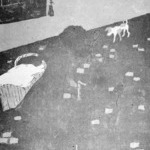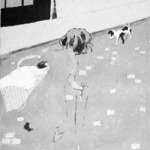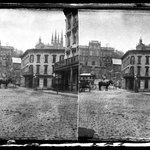
This image is presented as a "thumbnail" because it is protected by copyright. The Brooklyn Museum respects the rights of artists who retain the copyright to their work.

Pierre Bonnard (French, 1867–1947). The Little Laundry Girl (La Petite Blanchisseuse), 1895–1896. Color lithograph on wove paper, Image: 11 7/16 x 7 7/8 in. (29.1 x 20 cm). Brooklyn Museum, By exchange, 38.444. © artist or artist's estate (Photo: Brooklyn Museum, 38.444_transp1376.jpg)
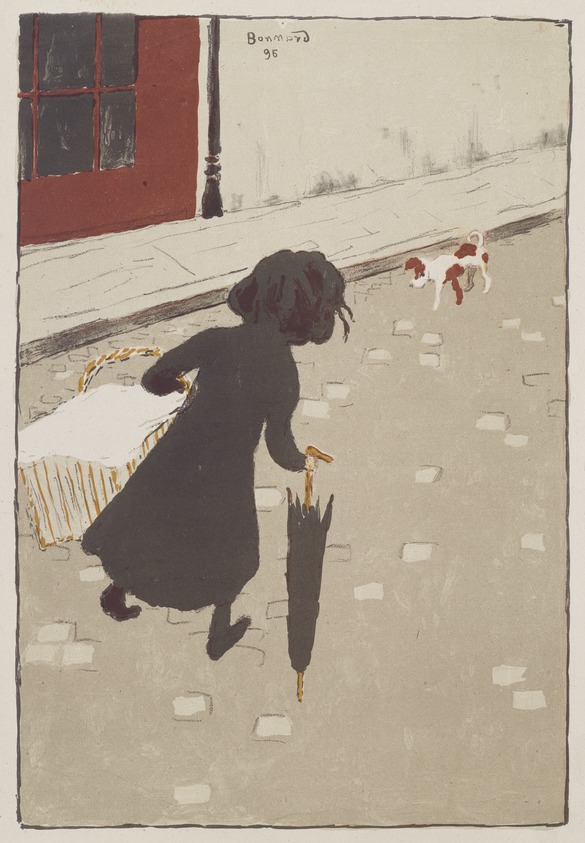
Pierre Bonnard (French, 1867–1947). The Little Laundry Girl (La Petite Blanchisseuse), 1895–1896. Color lithograph on wove paper, Image: 11 7/16 x 7 7/8 in. (29.1 x 20 cm). Brooklyn Museum, By exchange, 38.444. © artist or artist's estate (Photo: , 38.444_SL3.jpg)
The Little Laundry Girl (La Petite Blanchisseuse)
European Art
The Little Laundry Girl represents the epitome of Pierre Bonnard’s explorations of japonisme, the influence and study of Japanese art among European artists in the late nineteenth century. Its bold color, oblique organization, and elevated viewpoint reflect the compositions of Japanese prints, which permeated the Parisian art scene in the 1860s and 1870s. This work, which aestheticizes child labor, was Bonnard’s first color print commissioned by Ambroise Vollard, marking a new and dynamic period of the artist’s career.
PORTFOLIO/SERIES
L'Album des peintres-graveurs
PUBLISHER
Ambroise Vollard, French, 1866–1939
MEDIUM
Color lithograph on wove paper
DATES
1895–1896
DIMENSIONS
Image: 11 7/16 x 7 7/8 in. (29.1 x 20 cm)
Sheet: 20 3/4 x 15 1/4 in. (52.7 x 38.7 cm) (show scale)
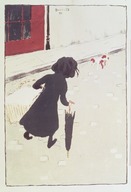


SIGNATURE
Upper center in stone: "Bonnard/96"
Signed, "P. Bonnard" lower right in pencil
INSCRIPTIONS
Lower right in graphite: "56"; lower right in graphite: "Bonnard"
COLLECTIONS
European Art
ACCESSION NUMBER
38.444
CREDIT LINE
By exchange
EXHIBITIONS
MUSEUM LOCATION
This item is not on view
CAPTION
Pierre Bonnard (French, 1867–1947). The Little Laundry Girl (La Petite Blanchisseuse), 1895–1896. Color lithograph on wove paper, Image: 11 7/16 x 7 7/8 in. (29.1 x 20 cm). Brooklyn Museum, By exchange, 38.444. © artist or artist's estate (Photo: Brooklyn Museum, 38.444_transp1376.jpg)
EDITION
Edition: 56/100
IMAGE
overall, 38.444_transp1376.jpg. Brooklyn Museum photograph
"CUR" at the beginning of an image file name means that the image was created by a curatorial staff member. These study images may be digital point-and-shoot photographs, when we don\'t yet have high-quality studio photography, or they may be scans of older negatives, slides, or photographic prints, providing historical documentation of the object.
RIGHTS STATEMENT
© artist or artist's estate
Copyright for this work may be controlled by the artist, the artist's estate, or other rights holders. A more detailed analysis of its rights history may, however, place it in the public domain.
The Museum does not warrant that the use of this work will not infringe on the rights of third parties. It is your responsibility to determine and satisfy copyright or other use restrictions before copying, transmitting, or making other use of protected items beyond that allowed by "fair use," as such term is understood under the United States Copyright Act.
For further information about copyright, we recommend resources at the United States Library of Congress, Cornell University, Copyright and Cultural Institutions: Guidelines for U.S. Libraries, Archives, and Museums, and Copyright Watch.
For more information about the Museum's rights project, including how rights types are assigned, please see our blog posts on copyright.
If you have any information regarding this work and rights to it, please contact copyright@brooklynmuseum.org.
RECORD COMPLETENESS
Not every record you will find here is complete. More information is available for some works than for others, and some entries have been updated more recently. Records are frequently reviewed and revised, and we welcome any additional information you might have.

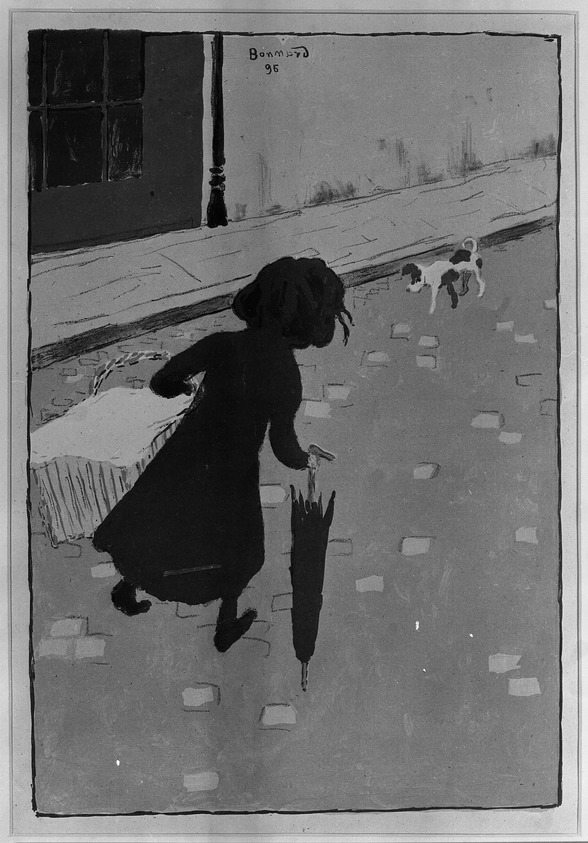


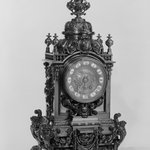
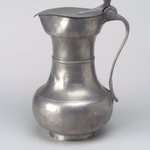
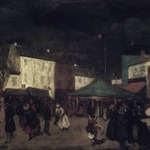
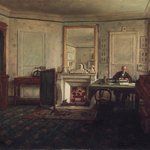
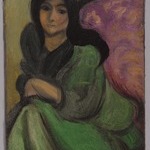
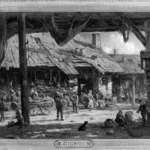



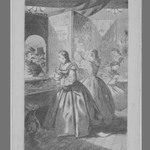


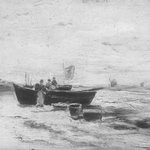

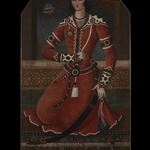
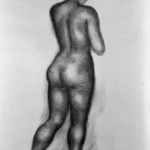

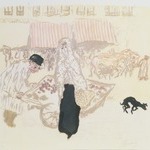
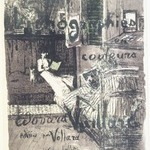
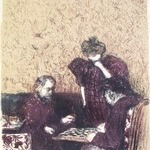
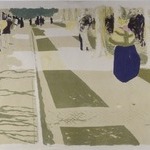
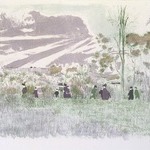


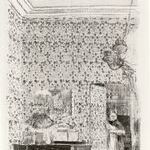

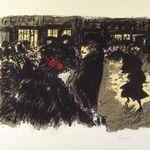
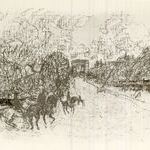
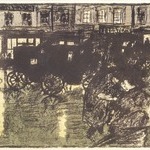

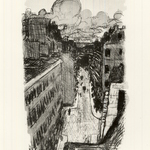
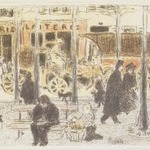
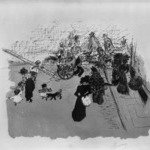
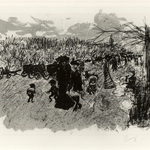
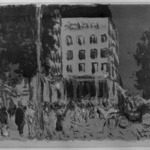
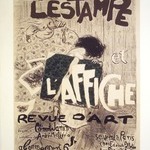
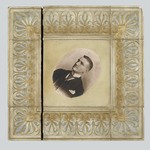

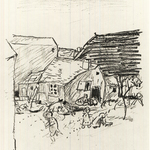
![The Bath, Second Version (Le Bain [deuxième planche])](https://d1lfxha3ugu3d4.cloudfront.net/images/opencollection/objects/size2_sq/74.35_SL3.jpg)

